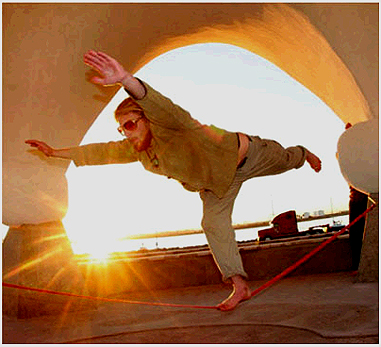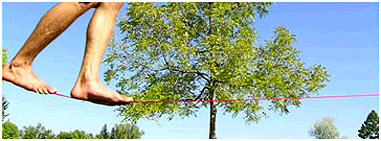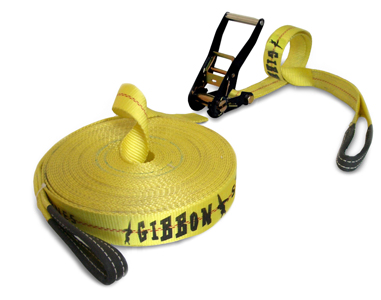Step off the ground. Look forward. Breathe.
Those were Sam Salwei’s sole instructions last fall when I stepped barefoot onto a span of inch-wide nylon webbing, its elevated length pulled tight and reverberating like a big guitar string hung 4 feet above the ground.
The line creaked with my weight. Arms shot out, searching for balance. Toes curled on the loaded line before — SNAP! — my foot slipped off, and I was flying.

Paul Cassedy on a line; Photo by Freesolo Photography/Sean O’Connor
We were in Minneapolis at the University of Minnesota, where slacklining is practiced between tall oak trees on a grassy mall. Like its cousin sport of tightrope walking, slacklining requires focus and acute balance to walk thin pathways through the air.
But slacklining is practiced on webbing with stretch, a taut line with some give, more akin to a rubber band than a cable. Most slacklines are set 20 to 40 feet long, tied between trees and hovering just a few feet off the ground. And the activity, invented in the 1970s by California rock climbers as a training regimen to boost concentration and balance, is less a circus act than it is a Zen discipline, mind and body working together in an elusive search for equilibrium.
Long a fringe activity, slacklining has grown in the past couple years, with gymnasts, yogis, cyclists, kayakers and even some soccer players embracing the sport, according to Joe Kuster, a climber who started Slackline Express LLC as a student at Missouri State University. “We’ve now sold slackline kits to the U.S. gymnastics team, physical rehabilitation clinics and the New Orleans Saints football team,” he said.
Slackline Express, based in Lafayette, Colo., offers packages with webbing, ratchets, carabiners, pads and slings — all you need to set up a line in your back yard — starting at $40.

footwork is half the game
Kuster has sold kits and supplies for about 8,000 setups since 2003. Sales have tripled in each of the past three years, he said.
Ric Phiegh, a 50-year-old pioneer of the sport, said slacklining is going mainstream. “Used to be I could count all the slackers in the country on two hands,” said Phiegh, who eight years ago started Slackline Brothers Inc. with his wife, Maria, in Los Angeles. “Today we’re seeing interest from surfers, skaters and snowboarders,” he said. “Parents call me every week for their kids, who saw a slackline at a festival or on a college campus.”











